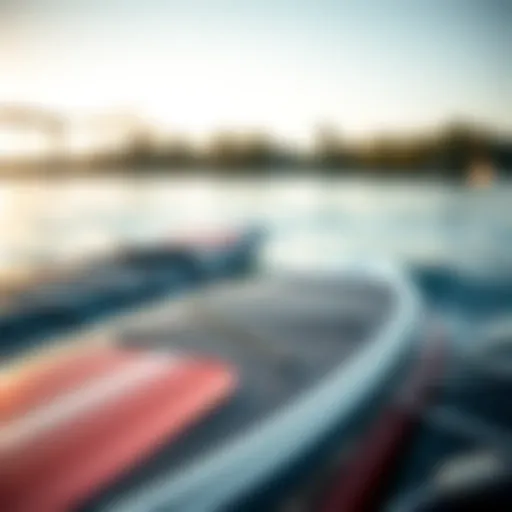Exploring Ocean Tides: Forces and Effects
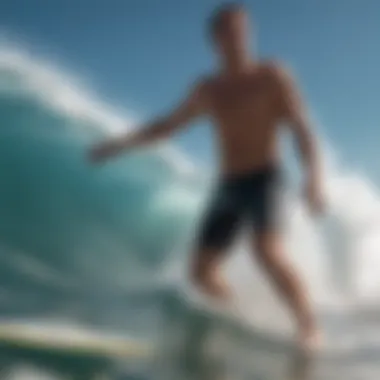
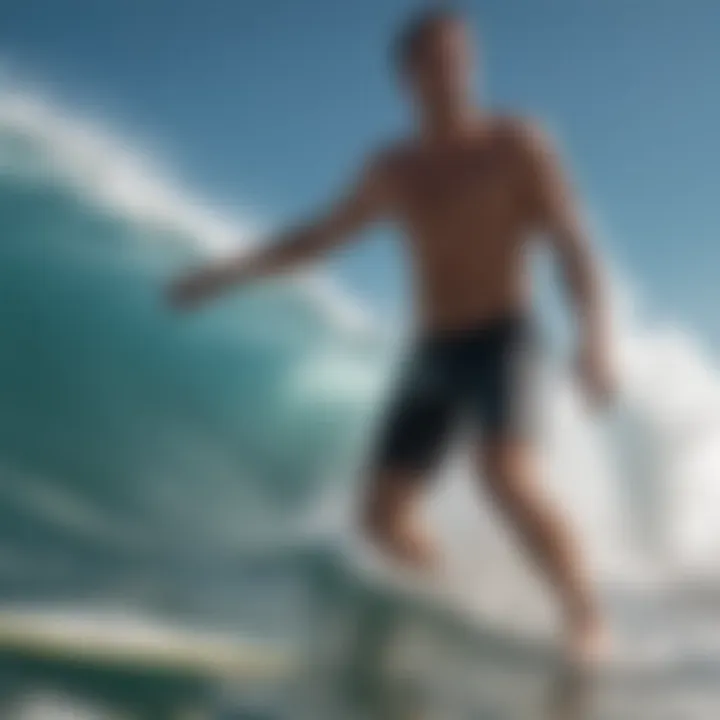
Intro
Ocean tides, those rhythmic rises and falls of the sea, are a natural phenomenon that holds great significance not only for the marine ecosystem but also for recreational activities like surfing. Understanding the dynamics behind tides can illuminate their impact on local surfing conditions, revealing the intricate connection between gravitational forces, the Earth’s rotation, and tidal patterns.
As we explore this topic, we’ll peel back the layers of science that govern these actions. By diving into the forces at play, both surfers and coastal enthusiasts can improve their knowledge of the water environment they cherish, making for richer experiences on the waves.
Surfboard Reviews
Types of Surfboards: An Overview
When discussing surfing, one cannot overlook the importance of selecting the right surfboard. There is a myriad of surfboard types, each tailored for specific conditions and surfing styles. From shortboards designed for agility and speed to longboards that offer stability and ease for beginners, understanding these differences is crucial.
- Shortboards: Typically under 6 feet, they feature a pointed nose and are designed for high-performance surfing, especially in powerful waves.
- Longboards: Ranging from 8 to 12 feet, longboards prioritize stability, making them excellent for beginners or those who prefer nose riding.
- Fish Surfboards: These are wider and shorter boards, perfect for small to medium waves. Their unique shape allows for better paddling and maneuverability.
- Funboards: A hybrid between longboards and shortboards, funboards provide a balance of stability and performance, ideal for surfers looking to progress.
- Gun Surfboards: Specifically made for big wave riding, these boards are longer and more robust, enabling surfers to handle powerful surf conditions.
Best Surfboards for Beginners and Pros
Choosing a surfboard can be daunting, especially for those starting. Here are some recommendations that could make the decision a bit easier:
- For Beginners:
- For Pros:
- Soft-top Surfboards: Softer tops offer a safer riding experience, minimizing injuries during falls. Great options include brands like Wavestorm and South Bay Board Co.
- Mini-Malibu: This type combines elements of longboards and shortboards, making it suitable for new surfers. Check models from NSP or BICS.
- Channel Islands Rocket Wide: Known for its versatility and speed, this shortboard performs exceptionally in varied wave conditions.
- Lost Puddle Jumper: A favorite among experienced surfers, this board can easily maneuver through smaller waves while still providing stability.
Surfing Techniques
Essential Techniques for Beginners
As surfers jump into the water, learning the right techniques can make the experience enjoyable and safe. Beginners should focus on:
- Paddling: Mastering the paddling technique ensures better positioning and momentum towards the wave.
- Pop-Up: The transition from lying down to standing is pivotal. Practicing this move on land helps build muscle memory.
- Wave Positioning: Understanding where to sit on the board when catching a wave is fundamental to success.
Advanced Maneuvers for Experienced Surfers
Once the basics are in place, surfers can move towards more complex techniques like:
- Cutbacks: A maneuver that allows surfers to change direction on the wave, maintaining speed and flow.
- Aerials: For those looking to truly capture the thrill, aerials involve launching off the wave and returning back to it.
"Understanding the timing and flow of ocean tides dramatically improves surf conditions. Engage with the sea, and it'll reward you with skill and excitement."
Understanding tides can lead surfers to catch waves at optimal times, ultimately enhancing their performance and enjoyment. By comprehensively grasping the dynamics of ocean tides along with the right equipment and techniques, surfers, lifeguards, and marine enthusiasts can truly connect with the ocean's rhythm.
Prelims to Ocean Tides
Ocean tides are not just a fascinating natural phenomenon; they encapsulate a myriad of intricate forces that affect our planet. Tides influence various aspects of coastal life, from the behaviors of marine organisms to the activities of beachgoers. Understanding tides is crucial for anyone engaged with the ocean, whether one is a surfer waiting for the perfect wave or a marine biologist studying ecosystems. This section lays the groundwork for appreciating the complexities of tides, emphasizing both their importance and impact.
Definition and Significance
At its core, a tide is the periodic rise and fall of sea levels, primarily driven by the gravitational pull of the moon and the sun. To many, tides are simply a routine part of life at the beach, marked by the rhythm of incoming and outgoing waters. However, these processes are more than mere fluctuations; they are essential to the health of coastal ecosystems. Tides play a crucial role in sediment transport, nutrient cycling, and the reproduction of various marine species.
The significance of understanding tides extends beyond biology. For surfers, knowing the tidal schedule can mean the difference between riding a perfect wave or crashing against a flat sea. Likewise, fishermen rely on tidal movements to determine the best times for catching specific species, as many fish are more active during specific tidal phases.
Historical Context of Tide Studies
Tidal studies have a long and storied history, weaving through the narratives of ancient civilizations. The Babylonians were among the first to systematically observe tides, recording them on clay tablets dating back over 3,000 years ago. Their observations laid the groundwork for later studies, profoundly influencing nautical navigation. As time marched on, figures like Galileo and Newton began to contribute to the scientific framework surrounding tides, with Newton's law of universal gravitation shedding light on the mechanisms behind tidal forces.
In contemporary settings, the significance of studying tides has grown exponentially due to advancements in technology. The ability to accurately measure tides now allows researchers to predict tidal changes with remarkable precision. With the looming challenges posed by climate change, understanding ocean tides has become increasingly relevant, as fluctuating sea levels can have dire consequences on coastal communities.
"The study of ocean tides is a captivating journey through the laws of physics and the history of our relationship with the sea."
As we explore the various nuances surrounding ocean tides in the sections that follow, we will unravel more about the celestial influences and local variations that dictate this dynamic aspect of our planet.
Gravitational Forces and Their Role
The dance of ocean tides can largely be attributed to gravitational forces. Understanding this dynamic is crucial for grasping the broader intricacies of tidal movements. Gravitational forces act as the puppeteers, guiding the rise and fall of sea levels in a coordinated rhythm, influenced primarily by two significant celestial bodies: the Moon and the Sun.
The Influence of the Moon
When it comes to ocean tides, the Moon takes center stage. Its gravitational pull creates what we know as tidal bulges—areas where water level rises due to the force exerted by the Moon's mass. This phenomenon does not just happen in a vacuum; it leads to a predictable cycle of high and low tides. Quite fascinating, isn’t it? The Moon, despite being about 238,855 miles away, has a substantial hold on our oceans.
The pattern is straightforward: as the Earth rotates beneath the Moon, different coastal areas experience these bulges. In effect, for most locations on Earth, this results in two high tides and two low tides roughly every 24 hours. The Moon’s influence can be likened to a metronome, keeping time, and ensuring that tide patterns remain consistent.
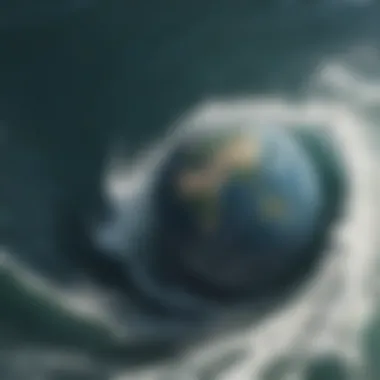
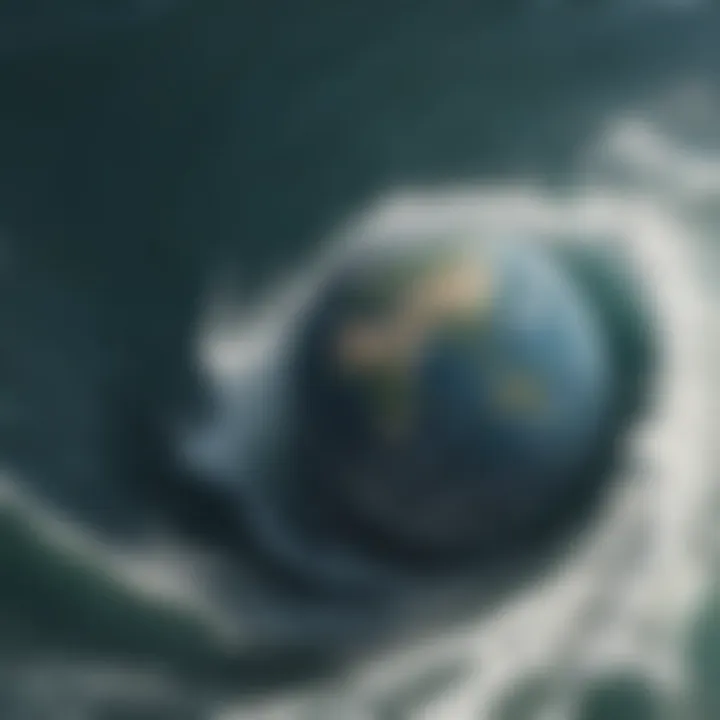
In regions with different geographical features, this influence may also lead to considerable variations—some places might experience strong tidal fluctuations while others have mild changes, shaped by their unique coves and bays.
The Sun's Gravitational Impact
Now, we can’t overlook the Sun; it’s a key player too. Though the Sun is much farther away than the Moon, its vast mass generates a significant gravitational pull that contributes to tides. In fact, the Sun's gravity operates almost in harmony with the Moon's gravity. Together, they create a balanced tug-of-war that results in what are known as spring and neap tides.
During spring tides (which happen twice a month), the Earth, the Moon, and the Sun align, resulting in particularly high high tides and low low tides. It’s when the living gets easy for surfers due to those awesome swells.
On the other hand, neap tides bring a gentle effect. When the Moon is at a right angle to the Sun in relation to Earth, the gravitational pulls partially cancel each other out, leading to the lowest high tides and the highest low tides. This means less extreme fluctuations and more stable conditions, possibly better suited for calmer sea activities.
Combined Effects of Celestial Bodies
Taken together, the gravitational forces from both the Moon and the Sun create a complex interplay. This synergy drives yet another fascinating aspect of tidal dynamics—the variability based on location and time. Coastal regions experience shifting tides that evolve due to the gravitational influences of these celestial bodies.
Here’s a clearer breakdown of this interaction:
- Alignment of bodies: When aligned, expect pronounced tidal ranges.
- Geometrical configuration: The angle formed by these celestial objects greatly influences tidal strength.
- Local geography: Geographic features such as estuaries and continental shelves can intensify or diminish tidal forces based on their shape and size.
This intricate ballet of gravitational influences dictates the rhythm of the oceans and is essential knowledge for not only surfers looking to catch the perfect wave, but also lifeguards keeping a keen eye on changing sea conditions.
"Understanding gravitational forces is like having a compass in the ocean of tides; it directs you toward better surfing days."
As we continue unfolding this topic, it becomes vital to explore how Earth’s rotation and centrifugal forces play into the dynamics of ocean tides.
Centrifugal Forces and Earth’s Rotation
To fully grasp the nuances of ocean tides, one can't overlook the role of centrifugal forces and the Earth's rotation. While gravitational forces get a lot of attention for their obvious pull, centrifugal force is the unsung hero in this dance of water across the planet. Understanding these forces gives us the foundational knowledge to interpret how tides are not just simple phenomena but rather complex interactions shaped by the Earth's own movement.
When we think about centrifugal forces, it is essential to recognize they arise due to the rotation of the Earth. This force acts outward from the center of rotation, and its effects are particularly significant when discussing the movement of water in oceans. As the Earth spins, especially at the equator, everything is in a constant state of rotation, leading to not only a sensation of weightlessness for anything not anchored down but also modifying how water accumulates in the oceans.
Understanding Centripetal Acceleration
Centripetal acceleration is a vital component of this discussion. This acceleration pulls objects towards the axis of rotation. In simpler terms, imagine a car making a sharp turn; as it turns, the occupants feel pushed towards the outside of the curve, while the car’s wheels are anchored by centripetal acceleration towards the center of the turn. On a larger scale, this also applies to the oceans as the Earth turns.
As the planet spins, the water's surface is influenced by both gravitational and centripetal forces, creating areas of higher and lower sea levels—what we commonly refer to as tides. Understanding centripetal acceleration helps in recognizing how water finds its level in response to both gravitational pull and the spin of Earth. It emphasizes the importance of position—sometimes being a little closer to the equator means experiencing more pronounced tidal changes.
How the Earth's Spin Affects Tides
Now let’s dive into how the spinning of the Earth directly shapes the tides we observe. The rotation of Earth takes approximately 24 hours, leading to the cycle of tides occurring over similar periods. But it’s not a simple routine; this motion leads to a fascinating push-pull effect that defines rising and falling sea levels.
As Earth spins, different areas of the ocean experience varying gravitational effects from both the moon and the sun. However, the centrifugal force generated by Earth’s rotation acts almost against gravitational forces, creating a bulge in the water and leading to the tide. This bulge of water occurs not just on the side facing the moon but also on the opposite side—an interesting result of that centrifugal pull.
To highlight how the rotation influences tidal patterns:
- Diurnal Effects: Coastal areas may experience one high tide and one low tide each day due to the Earth’s rotation pattern.
- Semi-Diurnal Tides: Other regions may observe two high and two low tides roughly equal in height—a result of a slightly different balance between gravitational and centrifugal forces.
Water doesn’t behave in a vacuum; it interacts dynamically with all forces at play, including the effects of the Earth’s spin. Each region experiences tides uniquely, influenced by local geography and coastal features. Understanding how these elements interplay not only prepares surfers to catch those all-important waves but also arms marine biologists and outdoor adventurers with insight into the natural world.
Tidal patterns are not just about phases of the moon or the position of the sun; they are deeply rooted in the very mechanics of our planet's motion.
In summary, while the gravitational forces draw the water, it is the centrifugal forces generated by the Earth's rotation that distribute and shape these tides across the oceans. This complex interaction is a key piece in the puzzle of why tides behave the way they do. From surfers analyzing each cycle to marine scientists mapping ocean patterns, recognizing these dynamics illuminates the hidden orchestration behind tide phenomena.
Variation in Tide Patterns
Understanding the variation in tide patterns is crucial for anyone involved in coastal activities, especially surfers and marine enthusiasts. It’s not just about the gravitational pull from celestial bodies or the spin of the Earth; various local and environmental factors come into play, creating an intricate dance of ebb and flow. This section explores how these factors contribute to the complex nature of tides, and why recognizing these variations can be a game-changer in practical applications.
Diurnal and Semi-Diurnal Tides
Tides can mainly be classified into two categories: diurnal and semi-diurnal. Diurnal tides have one high tide and one low tide each lunar day, while semi-diurnal tides exhibit two high tides and two low tides. The geographical location contributes significantly to which type of tide is observed.
In areas like the Gulf of Mexico, you might encounter predominantly diurnal tides. This phenomenon affects how coastal dwellers plan their fishing or recreational activities, as they know the tides will change just once a day. On the other hand, places like the Atlantic coast of the United States experience semi-diurnal tides, leading to a more predictable cycle of high and low water levels, which surfers can rely on for their daily surf sessions.
Recognizing these distinctions is not just an academic exercise; it’s practically applied knowledge that can inform everything from advanced water sports training to rescue operations conducted by lifeguards.
Spring and Neap Tides Explained
Next, we must discuss spring and neap tides, another layer of complexity in tidal behavior. Spring tides, not related to the season, happen when the Earth, moon, and sun are in alignment, leading to higher high tides and lower low tides. These extreme tides occur during the new moon and full moon phases.
Conversely, neap tides occur when the sun and moon form a right angle with respect to Earth, resulting in lower high tides and higher low tides. This happens during the first and third quarters of the moon.
- When to surf: Spring tides are excellent for those looking for more pronounced waves, while neap tides might be more suitable for beginners or calmer conditions.
- Fishing regulations: Local fisheries often align their conservation strategies with these tidal variations, protecting species during certain tidal stages.
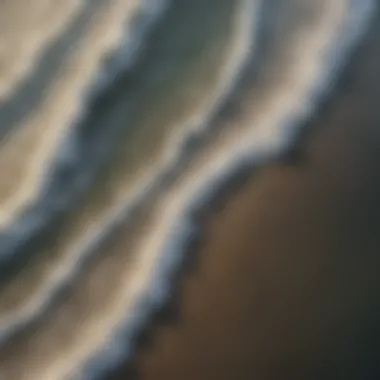
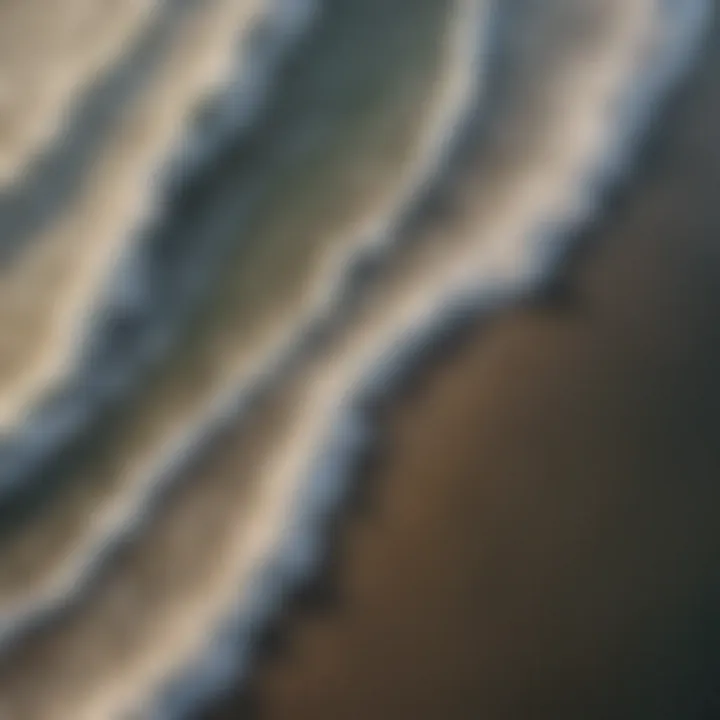
Both spring and neap tides highlight why understanding tide patterns is not just theory; it's a lifeline for effective water and coastal management strategies.
Factors Influencing Local Tides
Several local factors modify the general tidal patterns we have discussed. Here are key influences:
- Coastal geography: The configuration of the coastline can amplify or diminish the height of tides. For instance, narrow bays can lead to higher tides due to the funneling effect.
- Ocean floor topography: Underwater features like canyons and ridges can significantly impact how tides behave. The Gulf Stream, for example, interacts with tides in unique ways, affecting the local tidal cycle.
- Weather: Atmospheric pressure can also play a villain. High pressure typically reduces tidal height, while low pressure can lead to higher tides.
- Wind: Wind can push water towards the shore, increasing the tidal range temporarily, a phenomenon known to surfers as “wind tides”.
These interactions form a complex web of influences that can drastically change local tide conditions. Essentially, tidal dynamics aren’t just about the moon and sun's gravitational pull—they're part of a broader story that includes the very geography of our planet.
Understanding the variety of factors influencing local tides empowers surfers, coastal developers, and marine biologists alike, enabling them to adapt to ever-changing conditions.
By grasping the nuances of these variations, one accesses a wealth of knowledge crucial for maximizing coastal recreation, safety, and scientific understanding.
Influence of Geographic Location
The geographic location plays a pivotal role in dictating tidal behavior across different shores. The interaction of gravitational forces with the local terrestrial features creates a unique tapestry of tidal patterns that can vary dramatically even within short distances. Recognizing these variations is essential for surfers, coastal managers, and marine biologists who work with currents and tides as part of their daily operations. Additionally, understanding local tide dynamics can help in preparing for weather patterns that might influence activities on the water.
One of the key elements in this discussion is how the shape of the coastline can greatly impact tidal ranges. In regions where the coastline is more concave, like the Bay of Fundy in Canada, tides can surge higher than in more straighter coastal lines. The funneling effect created by the geographical contours can amplify the tides, making them noteworthy for both scientists and enthusiasts alike.
Furthermore, fishermen and surfers should be aware of the particular tidal patterns in their specific geographic areas as it can mean the difference between a successful catch or an unforgettable wave. Comprehending local tidal dynamics can inform decisions regarding safe navigation, optimal surfing conditions, and best practices for coastal conservation.
Coastal Features and Their Effect
Understanding coastal features is essential to grasp how they affect tides. Rocky outcroppings, sandy beaches, and estuaries each create distinctive tide patterns. Take sandy beaches for instance; they often experience more gentle tidal movements, which can create favorable conditions for surfing. The shallower depth allows for more predictability in wave formation, acting like a natural board for enhancing surfing experiences.
On the other hand, rocky shores often create unpredictable conditions. The interaction of swells against the rocks can generate strong currents and unpredictable waves, making these areas less suitable for novice surfers. It's crucial to study these features, as they not only influence the tides but also impact marine biodiversity and safety on the water.
- Smooth sandy beaches: Usually indicate calmer conditions, better for surfing.
- Rocky outcroppings: Can lead to turbulent waters; caution is advised.
- Estuaries: Often exhibit complex tidal behaviors, vital for understanding coastal ecology.
Influence of Ocean Floor Topography
The ocean floor isn't just a flat expanse; its topography significantly influences tidal behavior. Underwater ridges, valleys, and other features play a crucial role in how water moves during different tidal phases. For surfers and those involved in marine activities, it’s essential to appreciate the effect of the seabed on wave formation and current behavior.
Variations in depth can modify wave heights and the force with which they break on the shore. In regions where the ocean floor drops steeply, waves may break harder, creating challenging conditions that demand respect and skill. Conversely, in locations where the seabed slopes gently, the waves tend to form more gradually.
Factors to consider include:
- Submarine ridges: May enhance wave energy, resulting in larger surf.
- Valleys on the ocean floor: Often result in more complex wave patterns.
- Depth changes: Influence how waves break, which is critical for surfers.
"Ignoring the ocean’s topography can lead to dangerous conditions or missed opportunities for the perfect surf."
In summary, the local geography and seafloor characteristics dictate tidal movements, which in turn affects surfing conditions and marine life. Surfers who become adept at reading these signs will not only improve their skills but will also deepen their appreciation for the complexities of ocean tides.
Impact of Weather and Climate
Weather and climate are crucial elements that influence the dynamics of ocean tides. Understanding these factors can help surfers and marine enthusiasts navigate the ever-changing seascape, enhancing their experiences and safety. Tides are not just a product of celestial forces; local weather phenomena play an essential role in determining tide heights and patterns.
How Atmospheric Pressure Affects Tides
Atmospheric pressure tends to be one of those often-overlooked players in the tidal game. When atmospheric pressure drops, it leads to a rise in sea level because there is less weight pushing down on the water. This phenomenon, sometimes referred to as a pressure tide, can affect tidal amplitudes significantly. For instance, during stormy weather or tropical cyclones, the drop in pressure can cause sea levels to rise well above average tidal heights.
Surfers need to be aware of this, particularly when storms brew on the horizon. If a storm is approaching, tide tables showing normal conditions might underestimate how high the water will actually rise. The resulting higher tides can lead to more hazardous conditions, with stronger currents and potential flooding in coastal regions. Conversely, when high pressure dominates, we see a corresponding dip in sea levels, and that can sometimes affect surf quality too. If you're a surfer waiting for that perfect wave, feeling the atmospheric pressure is just as important as consulting the tide schedule.
Wind Patterns and Wind Tides
Wind doesn't just shape waves; it also influences the tides. Strong winds can push water toward the coastline, creating what's referred to as a wind tide. This can result in higher water levels, especially along wide, shallow coastal areas. Surfers must keep this in mind during windy conditions, as the interaction between wind direction and wave shape can create very different surfing experiences even when the tidal phase is the same.
Moreover, coastal topography can intensify wind effects. For example, if the land is shaped like a funnel, wind can accelerate as it moves into narrower spaces, making waves bigger and more chaotic. This scenario can lead to surprising tidal behaviors that are essential for anyone who spends time on the water.
Weather patterns also dictate seasonal changes which impact tidal behavior. For surfers, understanding local wind patterns leads to smarter choices about the best times to catch waves. Frequenting surf reports and keeping an eye on changing weather can be as valuable as knowing the tides themselves.
"Wind and pressure are often the unseen forces that dictate the outcomes on the water's surface, guiding the wave-riding adventure."
Implications of Tides for Surfing
When diving into the world of surfing, understanding the implications of ocean tides becomes not just beneficial but crucial. Tides can significantly affect wave quality, break patterns, and even the safety of the surf. For enthusiasts and instructors alike, being in tune with tide dynamics allows for informed decisions that can enhance the overall surfing experience. Recognizing the relationship between tides and surf conditions facilitates better timing for those that ride the waves.
Optimal Surf Conditions and Tidal Cycles
The interplay between tides and optimal surf conditions is fascinating. Simply put, certain tidal cycles will produce more favorable surf conditions. The best time for surfing can vary, but many surfers pay attention to both the tidal phase and the timing of local swells.
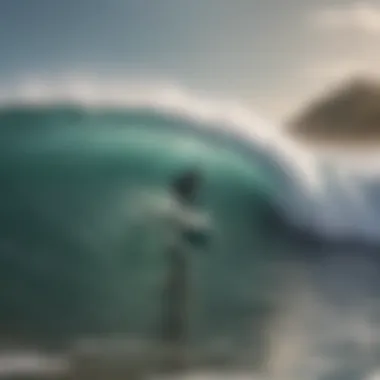
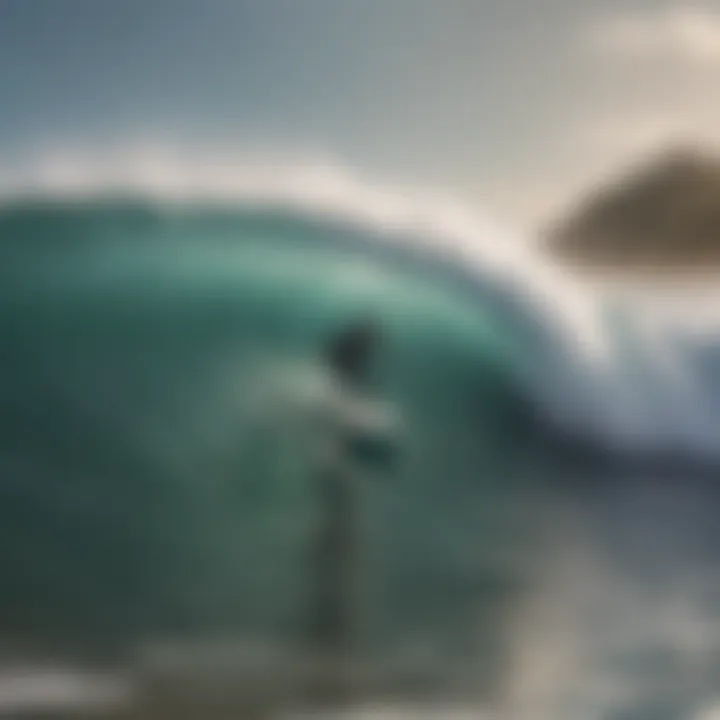
- High Tide: Some breaks work best during high tide because the depth of water allows waves to build without losing power. This generally results in steep, short, and hollow waves, ideal for experienced surfers who enjoy challenging rides.
- Low Tide: On the other hand, low tides can lead to more exposed river mouths and beaches, creating stronger surges. These spots might favor longer rides as the waves break more consistently.
- Tidal Windows: It's also worth noting the concept of tidal windows. This is the period during which the surf is at its best. For instance, a two-hour window before and after high tide often presents optimal conditions.
Many seasoned surfers develop a sixth sense for reading these tides. It’s often said that timing is everything in surfing, and catching the tide just right can make the difference between a thrilling session and a frustrating day at the beach. Observing local conditions and keeping a diary of surfing experiences in relation to tidal patterns can help aspiring surfers become more attuned to these rhythms.
Understanding Tidal Currents and Waves
A deep understanding of tidal currents can greatly enhance a surfer's performance. Tidal currents are driven mainly by the gravitational pull of the moon and sun, and these currents can affect not only the waves but also the directional flow of water at the surface. Knowing how to read these currents can provide an advantage, especially in more complex surf spots.
- Ebb and Flow: As the tide rises (flood), the water moves inland, and as it recedes (ebb), currents flow back to sea. This ebbing tide often creates stronger currents, which can provide 'rips'—channels of water that flow faster than surrounding areas. Rips can be good or bad depending on their positioning. They can offer an easy ride back out after catching a wave, but they can also be hazardous to the inexperienced.
- Ocean Dynamics: Wave formation is influenced by both wind conditions and tidal patterns. For surfers, this translates into understanding which conditions are ideal for particular spots. Some breaks react strongly during certain tides, producing clean waves that are more favorable for riding.
Tidal systems can be complex, making this aspect of surf forecasting both an art and a science. As many seasoned surfers will tell you, learning to read the ocean isn’t just helpful; it's an essential skill.
"When you sync up with the tides, it’s like finding a hidden frequency in the ocean's rhythm. The best sessions often come from understanding these subtleties."
For further information about tides and surfing conditions, check resources like Wikipedia or Britannica.
Historical Tidal Events and Their Significance
The study of historical tidal events is not merely a retrospective glance at nature; it serves as a lens through which we can better understand the intricate interplay between the ocean and human activities. These events hold immense significance for several reasons. Firstly, they provide critical insights into how tidal phenomena have historically affected coastal communities. Secondly, by analyzing past behaviors of tides, we can make informed predictions that help in planning and safeguarding coastal development. Lastly, these historical tides often reflect the delicate balance of our environment, reminding us of the interconnectedness of natural forces and human life.
Famous Tidal Phenomena
Tides have a fascinating history fraught with instances of dramatic fluctuations and powerful forces. Some events have left their mark not just on the sea but also on the people who live along the coasts. Consider the famous 2004 Indian Ocean Tsunami. Although technically triggered by an earthquake, the resulting tidal waves had devastating effects, claiming over 200,000 lives and reshaping coastal zones across several countries.
Another example is the Bay of Fundy in Canada, known for having the highest tides in the world. The unique geography of the coastline funnels tidal waters, causing a rise and fall that can exceed 50 feet. This phenomenon not only attracts tourists but is crucial for understanding local ecology and industries.
Let’s also talk about the Great Tide of 1667 in England, which wreaked havoc across the region, causing significant flooding and devastation. This event highlighted local vulnerability to tidal changes and helped to shape future coastal management practices.
Lessons Learned from Past Tidal Incidents
History has a way of teaching us, especially when it comes to understanding tides. From each tidal incident, both large and small, valuable lessons emerge:
- Preparedness is Key: The 2004 Indian Ocean Tsunami showed the world the importance of early warning systems. Coastal communities must make enhancing their preparedness a priority through education and technology.
- Respect for Nature: Events like the Great Tide of 1667 emphasize the need to approach coastal development with caution, respecting natural rhythms and forces.
- Adaptation and Resilience: Studies of the Bay of Fundy have revealed how communities can adapt to extreme tidal changes, employing innovative engineering solutions to protect their infrastructure and livelihoods.
In examining these both famous and lesser-known occurrences, we learn that anticipating changes in tidal behavior is essential amid a world ever-influenced by climate change and human activity. The experiences of past communities can guide current and future efforts to coexist peacefully with ever-rising waters and shifting shores.
Future Projections and Research Directions
The study of ocean tides is not static; as our world undergoes substantial environmental shifts, particularly due to climate change, understanding tides becomes even more crucial. This exploration into the future projections seeks to highlight the effects of human activity on tidal systems and how advancements in technology may help researchers and coastal communities adapt to these changes.
Impacts of Climate Change on Tides
Climate change is a term tossed around like a hot potato these days, but it holds significant implications for ocean tides. Rising sea levels, induced by melting ice caps and increased thermal expansion of seawater, are reshaping coastlines and altering tidal patterns.
- Increased Flooding Risk: With higher sea levels, coastal areas experience more frequent and intense flooding during high tides, often termed as “sunny day flooding.” This phenomenon not only disrupts local ecosystems but also directly influences human settlements.
- Changes in Tidal Range: Research suggests that global warming might change the amplitude of tides—the height difference between high and low tides. These shifts could threaten not only coastal habitats but also human infrastructures relying on predictable tidal patterns.
- Ecosystem Disruption: As tidal movements change, so do the habitats of various marine species. For instance, the spawning of some fish species which rely on specific tidal patterns may get affected, leading to long-term consequences on marine biodiversity.
Given these potential changes, marine scientists and oceanographers must work diligently to study and predict how tides will behave in a warmer world. Understanding these trends will be critical for the livelihoods of many, including surfers, beachcombers, and fisheries.
Advancements in Tide Measurement Technology
As the saying goes, ‘measure twice, cut once.’ Technological advancements are proving to be a game changer in accurately measuring tides and their effects.
- Satellite Altimetry: This cutting-edge technology involves satellites using radar to measure ocean surface heights, offering insights into tidal variations over time and across different regions. It allows scientists to monitor changes with unprecedented detail and accuracy.
- Real-Time Data Collection: Ocean buoys equipped with sensors provide real-time data on wave heights and tidal movements. This is immensely beneficial for both recreational surfers and commercial shipping, allowing them to make informed decisions based on current tide conditions.
- Modeling and Simulation Tools: The rise of sophisticated computational models simulating tidal patterns helps researchers predict future changes in tidal behavior under various climate scenarios. These tools can analyze the impact of different variables, such as storm surges or sea-level rise, offering invaluable foresight.
In summary, as we look to the horizon of oceanographic research, understanding the implications of climate change on tides, alongside leveraging advancing measurement technologies, will provide the crucial knowledge needed for effective coastal management and community resilience.
"The tides are not just a rhythm of the sea; they are deeply intertwined with the ever-changing fabric of our planet's climate."
By equipping ourselves with knowledge and understanding, we can better prepare for the challenges posed by these natural phenomena.
Finale
Summary of Tide Dynamics
In summary, tide dynamics are shaped by a combination of gravitational influences and the Earth’s rotation. As we've explored, the gravitational tug of the Moon stands out as a principal factor, with the Sun’s gravitational effects playing a vital supporting role. These celestial mechanics result in complex tide patterns that vary dramatically from one locality to another due to geographical factors—coastal features, ocean floor topography, and human activities all contribute to tide characteristics.
"Tides are the heartbeat of the ocean, influencing not only our coastlines but the rhythms of marine life as well."
Additionally, factors like atmospheric pressure and weather conditions also serve to modulate tide heights and timings, introducing variability that can interest surfers looking for optimal conditions.
Reflecting on the Importance of Understanding Tides
The importance of comprehending tides goes beyond just navigating the waves. Surfers, lifeguards, marine biologists, and coastal community members all benefit from a keen understanding of tidal dynamics. For surfers, knowledge of tides can make or break the surf experience; the right conditions can offer exceptional riding opportunities, while misjudging the tides could lead to dangerous scenarios. Lifeguards need to be acutely aware of changing tides for safety reasons, ensuring people are protected from the perils of high or low water levels.
From a broader ecological perspective, understanding tides can assist in safeguarding marine environments and managing fisheries. As climate change continues to impact ocean behavior, ongoing research into tide dynamics becomes essential to mitigate adverse effects and adapt to changing patterns. Recognizing these relationships allows coastal inhabitants to not only survive but thrive in harmony with their aquatic surroundings.
Thus, a deep understanding of tides is integral. It serves as a bridge connecting human activity and natural cycles, allowing us to navigate, respect, and adapt to the ocean's pulse.













